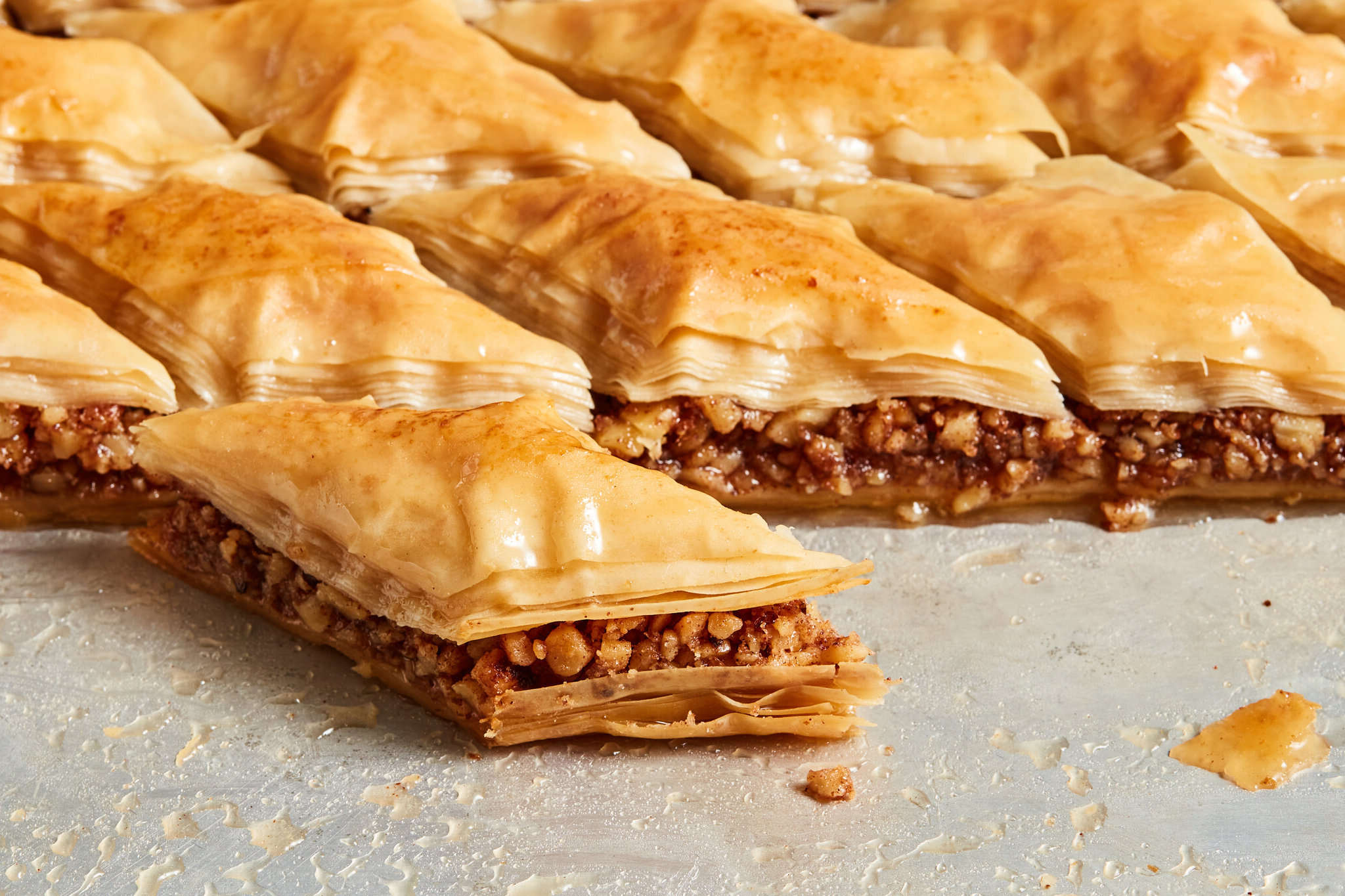
Baklava is a delicious dessert that has captured the hearts of many around the world. Originating from the Middle East, this sweet treat is made from layers of phyllo dough, filled with chopped nuts, and sweetened with syrup or honey. But what makes baklava so special? Its rich history and the intricate process of making it contribute to its unique charm. Did you know that baklava has been enjoyed for centuries, with roots tracing back to ancient civilizations? Whether you’re a food enthusiast or just curious about this delectable pastry, these 26 facts about baklava will give you a deeper appreciation for this timeless dessert.
What is Baklava?
Baklava is a rich, sweet dessert made of layers of filo pastry filled with chopped nuts and sweetened with syrup or honey. Originating from the Middle East, this delicacy has a fascinating history and cultural significance.
- Ancient Origins: Baklava dates back to the 8th century B.C., with roots in ancient Mesopotamia.
- Ottoman Influence: The modern version of baklava was perfected in the kitchens of the Ottoman Empire.
- Layered Perfection: Traditional baklava has 33 layers of filo pastry, symbolizing the years of Christ's life.
- Nutty Variations: Common nuts used include pistachios, walnuts, and almonds.
- Sweet Syrup: The syrup is often made from honey, sugar, and lemon juice.
- Regional Twists: Different countries have their own versions, such as Greek, Turkish, and Lebanese baklava.
- Holiday Treat: Baklava is a popular dessert during Ramadan and Christmas.
How is Baklava Made?
The process of making baklava is intricate and requires patience. Each layer of filo dough is carefully brushed with butter before being stacked and filled with nuts.
- Filo Dough: This paper-thin dough is the foundation of baklava.
- Butter Brushing: Each layer of filo is brushed with melted butter to achieve a crispy texture.
- Nut Filling: A mixture of finely chopped nuts is spread between layers.
- Baking: Baklava is baked until golden brown and crispy.
- Syrup Soaking: After baking, hot syrup is poured over the baklava, allowing it to soak in and sweeten the layers.
Cultural Significance of Baklava
Baklava is more than just a dessert; it holds cultural and historical importance in many regions.
- Symbol of Hospitality: In many cultures, serving baklava is a gesture of hospitality.
- Festive Dessert: It is often served during special occasions and religious festivals.
- Gift of Love: Baklava is commonly given as a gift to show appreciation and love.
- Culinary Heritage: Each region's version of baklava reflects its unique culinary traditions.
Fun Facts About Baklava
Beyond its delicious taste, baklava has some interesting trivia that might surprise you.
- World Record: The largest baklava ever made weighed over 500 kilograms.
- Baklava Day: National Baklava Day is celebrated on November 17th in the United States.
- Caloric Content: A single piece of baklava can contain up to 300 calories.
- Baklava in Space: Astronauts have taken baklava to space as a treat.
- Baklava Wars: Greece and Turkey both claim to be the originators of baklava, leading to friendly culinary rivalries.
Modern Takes on Baklava
While traditional baklava remains popular, modern chefs have put their own spin on this classic dessert.
- Chocolate Baklava: Some versions include layers of chocolate for a richer taste.
- Vegan Baklava: Made without butter or honey, using alternatives like coconut oil and agave syrup.
- Baklava Ice Cream: Combining the flavors of baklava with creamy ice cream.
- Savory Baklava: Some chefs experiment with savory fillings like cheese and herbs.
- Baklava Cheesecake: A fusion dessert that combines the textures and flavors of baklava with cheesecake.
The Sweet Finale
Baklava isn't just a dessert; it's a slice of history wrapped in layers of flavor. From its ancient origins to its modern-day variations, this pastry has traveled through time and across cultures, bringing joy to countless taste buds. Whether you prefer it with pistachios, walnuts, or a hint of rose water, there's a version of baklava for everyone. Next time you take a bite, remember you're savoring a piece of culinary heritage that has been perfected over centuries. So, why not share this delightful treat with friends and family? It’s a delicious way to connect with the past while enjoying the present. Enjoy your baklava, and let each bite remind you of the rich tapestry of stories and traditions that make this dessert truly special.
Was this page helpful?
Our commitment to delivering trustworthy and engaging content is at the heart of what we do. Each fact on our site is contributed by real users like you, bringing a wealth of diverse insights and information. To ensure the highest standards of accuracy and reliability, our dedicated editors meticulously review each submission. This process guarantees that the facts we share are not only fascinating but also credible. Trust in our commitment to quality and authenticity as you explore and learn with us.


